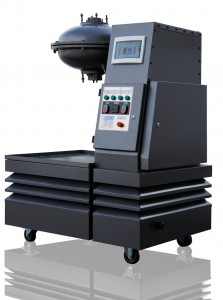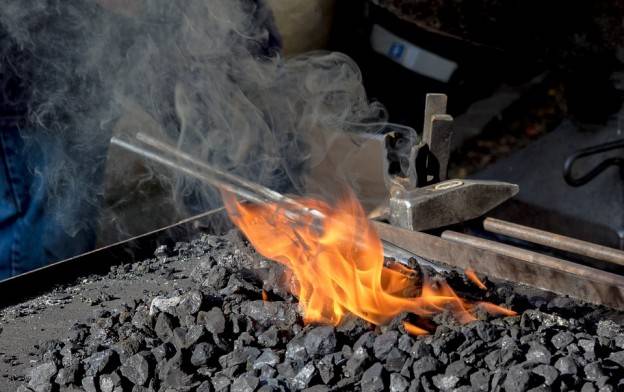Today, a significant amount of the energy generated and consumed around the world is produced by burning fossil fuels. In addition to oil and natural gas, coal is also quite actively used as an energy source.
At modern electric power plants, solid fuels are ground into a pulverized state and, in an admixture with air, are fed into a combustion chamber for burning. This is preceded by the preparation of large pieces of wet coal, which includes coarse crushing of coal into pieces the size of a few of millimeters. It is subsequently dried and ground into a pulverized state.
The main advantage of using pulverized coal is the substantial increase in the surface reaction. This improves the combustion conditions and increases the efficiency of the burners. Additionally, the use of pulverized coal does not limit the power of the boiler’s combustion conditions. It allows the operator to fully mechanize the combustion process and makes it easier to control.
There are also alternative ways of using pulverized coal for energy. First of all, we are talking about co-firing of coal with biomass and preparation of coal-water fuel.
At thermal power plants operating in Europe and North America, co-combustion of coal with wood pellets has been increasingly practiced in recent years. Such innovation has been able to reduce harmful emissions when burning coal alone. There are several possible options for co-burning of coal and biomass:
- the parallel incineration;
- indirect co-incineration; and
- direct co-incineration.
In direct co-burning, the coal and biomass are prepared, crushed and fed into the boiler at the same time. Indirect co-burning is characterized by separate preparation of the coal and the pulverized biomass. In parallel co-burning, coal and biomass are combusted using separate boilers.
Another option for reducing the amount of harmful emissions is the use of coal-water slurries (coal-water fuels). They are characterized by low combustion temperature, thereby reducing the nitrogen oxide emissions by as much as 70%.
Existing Methods of Coal Grinding
In practice, special devices, called mills, are used for the grinding of coal. Ball pulverizer mills can grind and dry soft fuels with a high humidity content at the same time. They can grind coal to the pulverized state, but have the disadvantages of bulkiness and complexity, as well as a high rate of electricity consumption.
Ball and roller mills are not very effective when processing objects of high strength and/or hardness. This is reflected in the slow deterioration of crushing capabilities whereby a steady increase in the proportion of large pieces and reduction of the discharge of dust.
There are also difficulties in grinding wet ash coals that merge and become compressed under the grinding elements. This results in poor milling.
Hammer mills enable simultaneous grinding and drying of fuel using air or a gas-air mixture. The main drawback of such devices however, is a relatively rapid wear of the beaters (hammers) and the need to replace them after 300 to 600 hours of work.
What does GlobeCore offer?
All known methods of coal grinding are characterized by the complexity and bulkiness of the equipment and the large amounts of energy used. Vortex layer devices structurally resemble an asynchronous motor. The main difference is the absence of a rotor. The device is powered by a three-phase network that generates a rotating electromagnetic field of industrial strength frequency. The processed material is fed into the working zone where special ferromagnetic particles are added into the material being processed. The latter begin to rotate under the influence of the magnetic field performing multiple striking impacts on the processed material.
 Here at GlobeCore, we have carried out studies on the possibility of grinding coal to a pulverized state using the GlobeCore AVS-100 type vortex layer device. During the study, a 250 gram piece of anthracite coal was used to test the AVS-100 vortex layer device. We used ferromagnetic particles with a diameter of 3mm. As a result, we managed to succeed in crushing the coal to a pulverized state within one and one half minutes.
Here at GlobeCore, we have carried out studies on the possibility of grinding coal to a pulverized state using the GlobeCore AVS-100 type vortex layer device. During the study, a 250 gram piece of anthracite coal was used to test the AVS-100 vortex layer device. We used ferromagnetic particles with a diameter of 3mm. As a result, we managed to succeed in crushing the coal to a pulverized state within one and one half minutes.
The results obtained during the experiments suggest that grinding coal by the vortex layer devices takes significantly less time and energy than the known mechanical grinding processes.
GlobeCore is able to manufacture vortex layer devices on a commercial scale through specific customized orders. This equipment can be used in the following systems:
- preparation of fuel for powdered combustion;
- preparation of coal-water fuel; and
- co-burning of coal and biomass.
Using GlobeCore’s vortex layer devices, you can design and implement a completely new system and/or upgrade existing ones.

